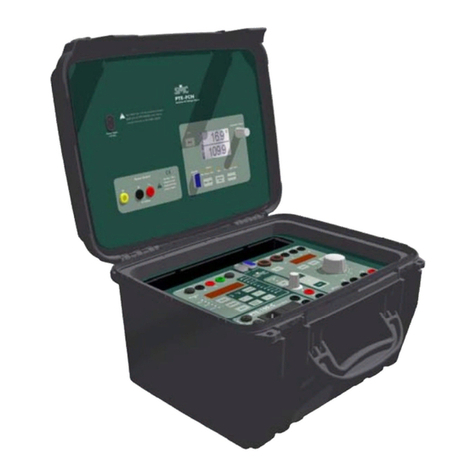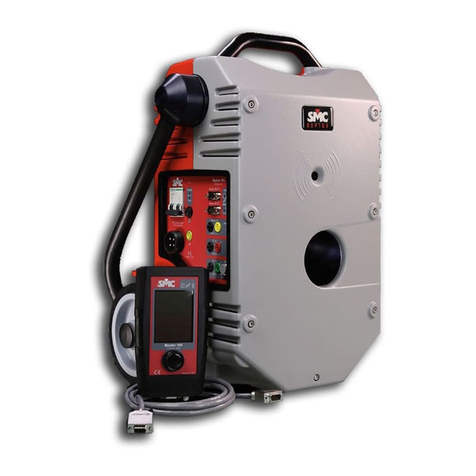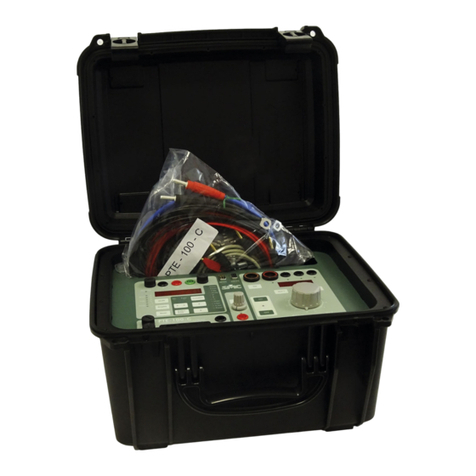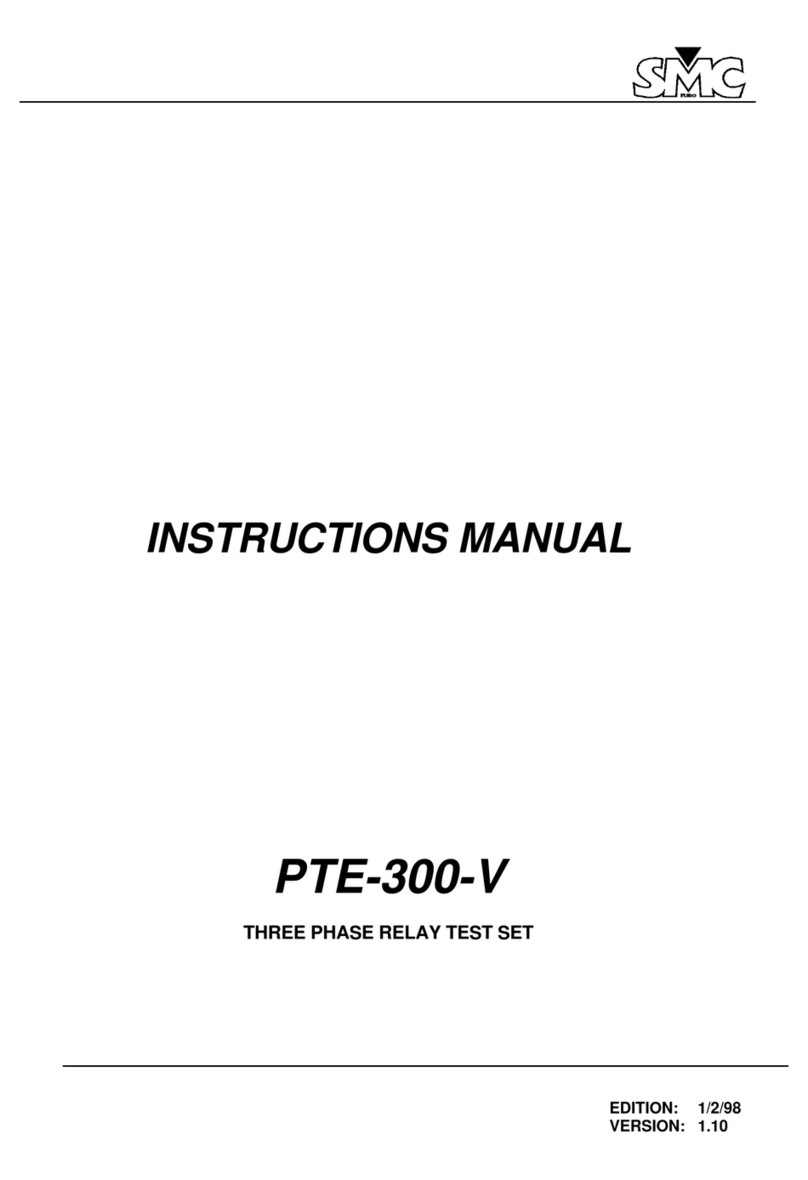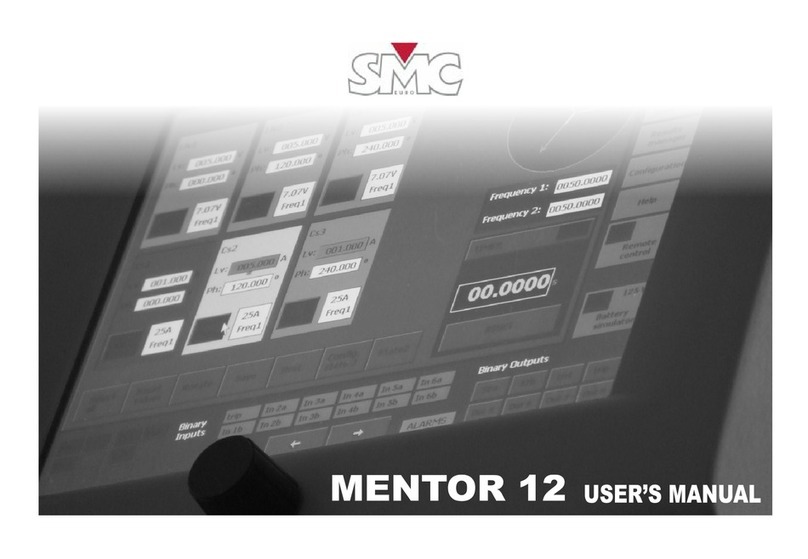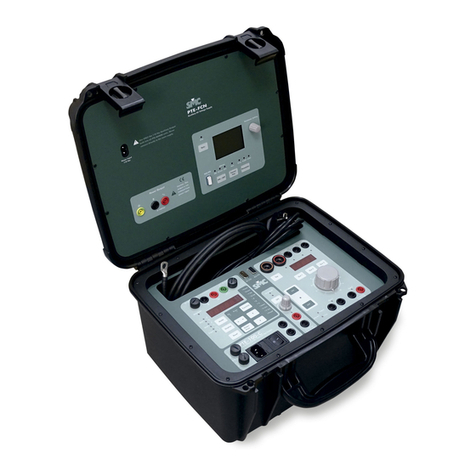PTE-50-CET
Sheet 3
3.5.1. CONTROL KEYS .................................................................................................................27
3.5.1.1.Reset .......................................................................................................................27
3.5.1.2.Print .........................................................................................................................27
3.5.1.3.RS-232 serial port control........................................................................................27
3.5.1.4.SYNCHRONIZATION..............................................................................................27
3.5.1.5.HARMONICS selection ...........................................................................................28
3.5.1.6.Activating the BOOSTER ........................................................................................28
3.5.2. OPTIC INDICATORS...........................................................................................................28
3.5.2.1.RS-232 port indicator...............................................................................................28
3.5.2.2.SYNCHRONIZING REFERENCE indicators...........................................................29
3.5.2.3.Monitor state indicator.............................................................................................29
3.5.3. CONNECTORS AND FUSES..............................................................................................29
3.5.3.1.Voltage supply.........................................................................................................29
3.5.3.2.Monitor input taps....................................................................................................30
3.5.3.3.Auxiliary output to start an external timer................................................................31
3.5.3.4.RS-232 connector....................................................................................................31
4. FUNCTIONS: USE AND DESCRIPTIONS............................................................................................32
4.1. TIME MEASUREMENT..................................................................................................................32
4.1.1. SIGNAL MONITOR ..............................................................................................................32
4.1.2. TIMER MODE SELECTION.................................................................................................32
4.2. LEVEL SECTION: POWER OUTPUT............................................................................................33
4.2.1. INITIAL STATUS..................................................................................................................33
4.2.2. OUTPUT MODE SELECTION (I/V)......................................................................................33
4.2.3. OUTPUT RANGE SELECTION ...........................................................................................34
4.2.4. REFERENCE SOURCE SELECTION .................................................................................34
4.2.5. OUTPUT VALUES SELECTION..........................................................................................34
4.2.6. OUTPUT CONTROL: ON/OFF AND ALARMS....................................................................35
4.2.7. DYNAMIC TESTS: STEP TO 2ND VALUE ...........................................................................35
4.3. PHASE ANGLE SELECTION.........................................................................................................36
4.3.1. PHASE ANGLE SENSE.......................................................................................................36
4.3.2. DYNAMIC TESTS: STEP TO 2ND VALUE ...........................................................................37
4.3.3. USE OF EXTERNAL REFERENCE INPUT.........................................................................38
4.4. GENERAL CONTROL SECTION...................................................................................................38
4.4.1. SIGNAL MONITOR ..............................................................................................................38
4.5. COMMUNICATION IN BUS-PTE...................................................................................................39
4.5.1. EVENTS IN BUS-PTE..........................................................................................................39
4.5.2. EVENT TRANSMITTED BY A PTE-50-CET........................................................................39
4.6. SPECIAL FUNCTIONS...................................................................................................................40
4.6.1. AUTO OFF ...........................................................................................................................40
4.6.2. FAILURES DETECTION......................................................................................................40












